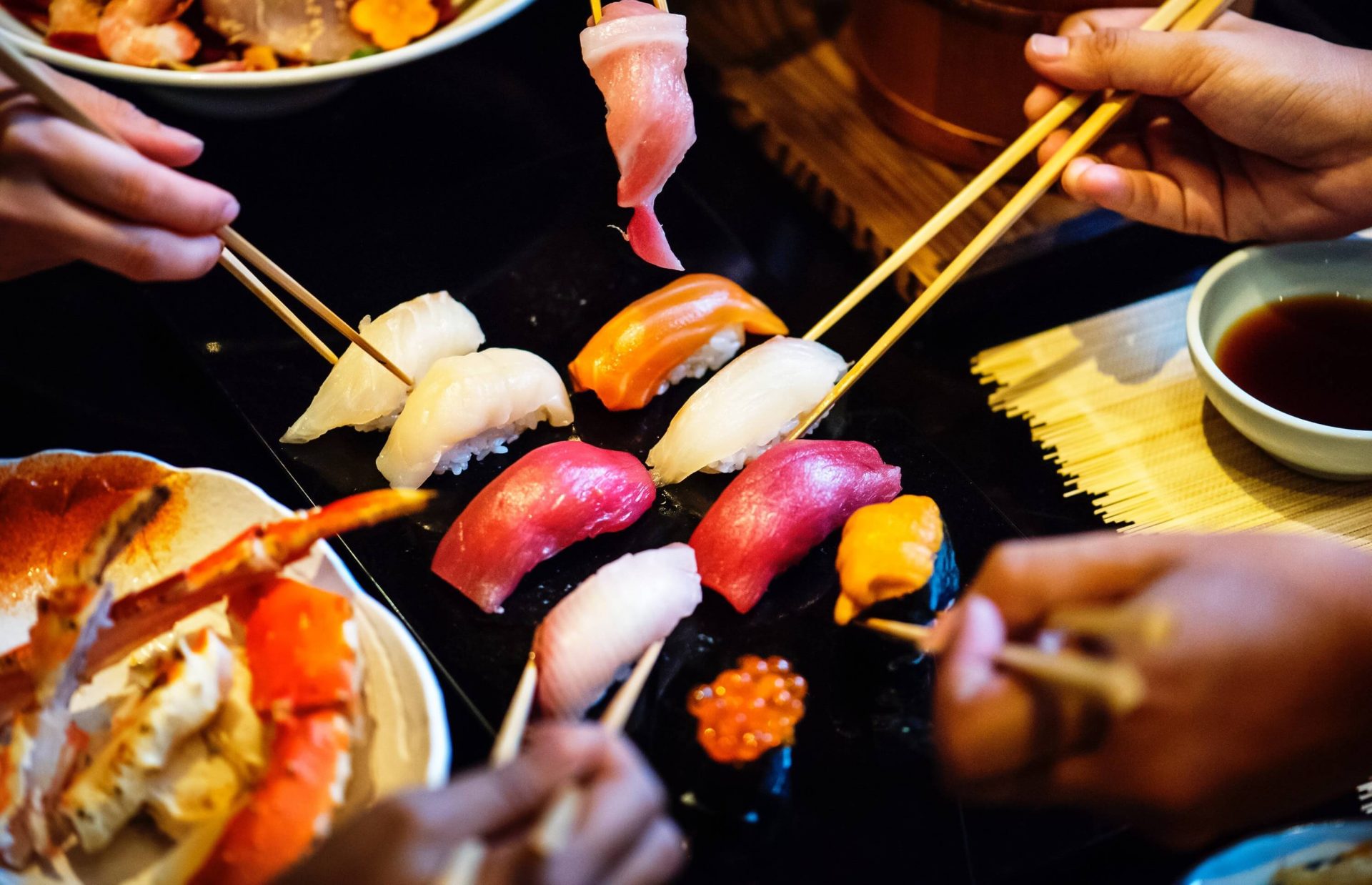
Exploring Japanese Cuisine, the Foods You Can’t Miss
Japanese cuisine has long been considered one of the world’s finest and most distinctive. Outside Japan, its adoption has come in waves. First, there were individual dishes like sushi and ramen, perhaps seen more as novelties than delicacies. Then, chain restaurants such as Yo! Sushi! and Wagamama arrived, to present the food in a little more context (though necessarily streamlined and internationalized).
But as interest in Japanese culture and history, has boomed in the last decade, the hunger for the bustling country’s authentic flavors has widened. Indeed, the Millennials surveyed said they were 13% more likely to visit the country based on these cultural factors. So, if you’re among those looking to get deeper than the clichés (however delicious they may be), here’s a guide to your next eats.
Soba and Udon
Let’s start simple. Ramen noodles are vastly popular the world over, but (despite some Japanese modifications) they’re also originally Chinese.
For a more traditional noodle, try Soba, which uses buckwheat, a staple crop in Japan’s mountainous regions. You can eat it in a hot soy sauce and mirin (wine) infused dashi broth or chilled with toppings and dips. Unlike Ramen, Soba contains all nine essential amino acids, perhaps partly accounting for their long-standing popularity.
Udon noodles, like Ramen, are made from wheat flour. They tend to be made thicker than other noodles, giving them a chewy texture closer to pasta.
Yakitori
It’s a dish common to most of the world’s cuisine, but Japan takes on what’s essentially meat-on-a-skewer is as exacting in its detailing as you’d expect. Then making it one of the tops of Japanese cuisine.
And, in this case, it’s not what’s inside that makes it special, but precisely its commitment to simplicity. The chicken (most commonly) is grilled over charcoal, skewered, and seasoned with either shio (salt), or a sweet soy sauce glaze (tare).
Natto
OK, it’s time for a challenge. If you have a passing interest in Japanese cuisine, and especially the experiences of tourists in Japan, you’ve doubtless heard of this delicacy, which is loved and hated in equal measure.
Made from soybeans that have been fermented, acquiring a disconcertingly slimy texture in the process, Natto smells not unlike cheese mold. Combined with the texture, it’s a combination few from outside the country ever fully embrace, so do try it for yourself (but don’t say we didn’t warn you).
Onigiri
Before the sandwich, there was the rice ball (aka Umeboshi). It’s still an omnipresent option in Japanese convenience stores (and usually pleasingly cheap).
Despite the unpromising name (a bit like if we called sandwiches ‘bread stacks’), Onigiri almost always comes wrapped with Nori seaweed plus assorted fillings. Try seaweed, tuna, pickled plums, or teriyaki chicken.
Kashi-pan
This most popular Japanese take on bread is a convenience food that you can find it everywhere. Furthermore, there are countless variations (often inside the dough).
Savory versions include the deep-fried Kare-pan, which is coated with panko breadcrumbs (from crustless bread) and filled with curry sauce. Meanwhile, dessert options range from An-pan (starring sweet red bean paste) and Melon-pan (topped with cookie dough).
Wagashi
Speaking of sweets, Japanese cuisine has concluded with a portion of Wagashi for generations.
As with much of Japanese cooking, the emphasis is on allowing a few fresh ingredients to fully express their flavor. And so, the best-known form of Wagashi, Mochi (rice cakes), tends toward simplicity. Green tea, raspberry, mango, and chocolate are all among the most coveted.
Takoyaki
One of the best well-known street food in Japan surely includes Takoyaki. Originating in Osaka, now you can easily find Takoyaki at convenience stores, food courts, street vendors, supermarkets, and even specialty restaurants.
With the name Octopus Balls or Octopus Dumplings, of course, its main ingredient is octopus, covered by the Dashi-flavoured batter. The other ingredients are beni shoga (pickled red ginger), green onion, and tenkasu (tempura scraps). Additionally, it would be a big mistake if you eat Takoyaki without its toppings. They have takoyaki sauce, Japanese mayonnaise, aonori (dried green seaweed), and especially katsuobushi (dried bonito flakes), which dances when it’s hot.
Just a quick tip, Takoyaki is pretty good going with alcoholic drinks or beer. So enjoy it yourself!
PIN THIS POST NOW TO SAVE YOUR LIST OF JAPANESE CUISINE

16 Comments
-
-
Khoi Nguyen
That’s cool! You should try to eat all the Japanese foods, I’m sure you will love it.
Also I will try to update on this post more dishes of Japanese cuisine so you can try all.
-
-
-
Khoi Nguyen
I’m sure you will be in love with Japanese cuisine 😉
-
-
Eric
The main reason I am trying to convince the family to go to Japan, is because of the delicious food. This post has urged me to try harder lol.
-
Khoi Nguyen
Show this post to your family I’m sure they will agree with you to visit Japan right away, haha 😉
-
-
VouchersTree
Content and your article skill both are always good. Thanks for sharing this article this content is very significant for me I really appreciate you
-
Khoi Nguyen
Your comment made my day! Thank you a lot for the complement!
-
-
-
Khoi Nguyen
Yeah, but in other countries, they have similar tastes too.
-
-
-
Khoi Nguyen
Thanks for your comment!
-
-
-
Khoi Nguyen
Thanks a lot for your comment! I hope you like it.
-
-
The Fitmania
Keep up the good work.
-
Khoi Nguyen
Yes, thank you!
-















Kerstin Daut
Good to know! I’ll live in Japan for one year and there were tips which I didn’t know before, thanks!